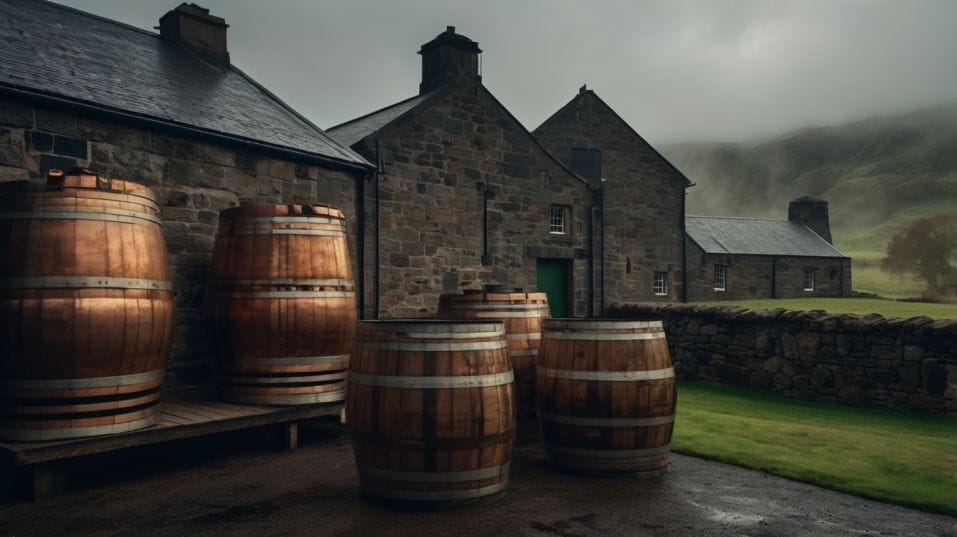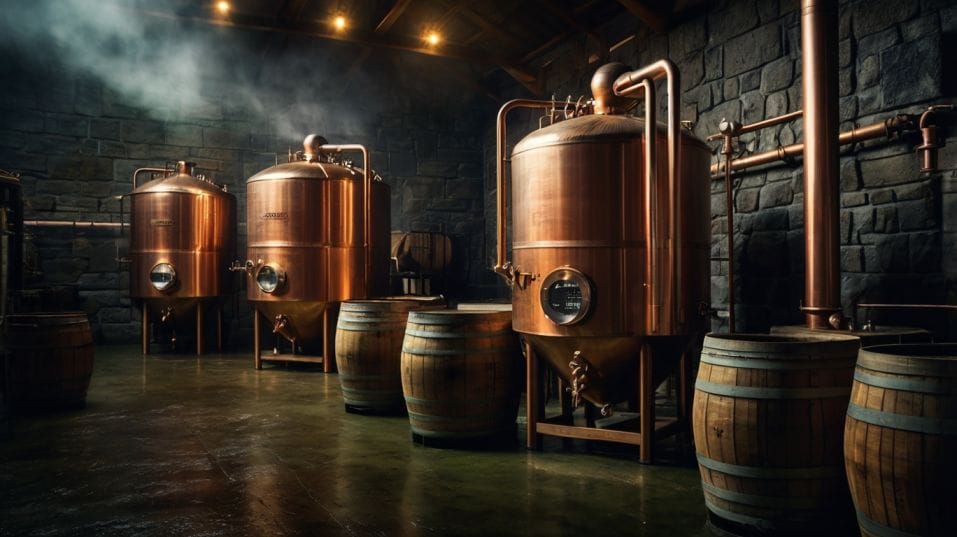How Regional Traditions Shape Flavor
Discover how regional traditions shape whiskey flavor. Learn what to taste, why it matters, and how to build a smarter, more personal collection.

What if the most important thing about your whiskey isn’t the brand—but where it’s from? For new collectors and curious sippers, region isn’t just a backstory. It shapes how whiskey tastes, feels, and finishes.
From the grains used to how it ages in the barrel, tradition and location work like an invisible hand, crafting every sip. Once you start tasting regionally, you stop guessing—and start drinking with purpose.
Origin Is a Flavor Driver
Let’s start with the basics. Whiskey begins with grain, water, and yeast. But that doesn't mean it's neutral territory.
Each region makes decisions that reflect local resources, habits, and expectations—decisions that shape every drop of the final spirit.
In Scotland, malted barley rules. It's not just tradition—it’s climate. Barley grows well in cool, damp weather.
The Scottish malt style leans nutty, earthy, sometimes smoky depending on whether peat is involved.
Regional splits within Scotland (Islay vs. Speyside, Highlands vs. Lowlands) get even more granular, with some areas emphasizing light fruit while others double down on smoke and brine.
Across the ocean, Kentucky bourbon starts with corn—by law, at least 51%—but often more. Corn's sweetness is unmistakable, and the warm southern U.S. climate pushes fast, intense aging.
That’s why bourbon hits hard on vanilla, caramel, baking spice, and oak. Rye, used heavily in certain American styles, flips that profile—less sweetness, more spice, sharper edges.
Japanese whiskey takes its cues from Scotland but bends them through a lens of precision and restraint.
While the ingredients might overlap—barley, imported casks, even Scottish peat—the execution is unmistakably Japanese: clean, layered, quiet but profound. Even the fermentation tanks and distillation tweaks are chosen to chase balance.
This is where you, as a serious drinker, can start drawing connections. Grain isn’t just a starting point. It’s a clue. A guide. And once you understand what a region grows, you’re halfway to predicting what it tastes like.

Climate Isn’t Just Background Noise
If you only remember one thing from this article, let it be this: climate drives aging. It's not romantic. It's chemical.
Hot climates—think Kentucky, Texas, Tennessee—make barrels expand and contract like lungs. That pushes spirit in and out of the wood more aggressively, pulling flavor faster.
This doesn’t just darken the whiskey—it reshapes it. Tannins, spice, vanilla, oak sugars—all turned up. Sometimes bold, sometimes brash.
Age statements in these climates don’t mean what you think they do. A six-year bourbon from Texas can taste older—and bolder—than a twelve-year Scotch.
Cooler climates age slow and subtle. In coastal Scotland or inland Japan, whiskey matures with restraint. It doesn’t get rushed into wood saturation.
This allows flavors to evolve more gradually: orchard fruit, florals, soft smoke, honeyed malt. Longer aging here doesn’t just add complexity—it preserves balance.
This is why comparing a 10-year Scotch to a 10-year bourbon is almost meaningless unless you account for where that aging happened. Same number, completely different outcome.
Want to collect smarter? Look at region and climate before the age statement. Always.
Distillation Reflects Philosophy
Distilling isn't just a technical step—it’s a creative decision grounded in regional thinking.
Irish Triple Distillation
In Ireland, the use of triple distillation (especially in pot stills) produces ultra-smooth, oily spirits with a floral edge. It's not just about smoothness—it’s about removing rough edges while preserving depth.
Scottish Pot Still Precision
Scotland tends to stick with double distillation, often in copper pot stills shaped to preserve certain flavor characteristics.
Some distilleries design their stills to encourage heavy, sulfur-rich notes. Others aim for bright, estery fruit. These aren’t accidents. They’re signatures.
American Efficiency
American distillation—especially in bourbon production—leans heavily on column stills. They’re efficient, consistent, and scalable. That’s why bourbon, for all its mass production, can still punch hard on flavor: because it’s focused, not fuzzy.
Japanese Obsession with Control
Then there’s Japan, where distilleries often own multiple types of stills and tweak recipes obsessively. The goal isn't volume—it’s control. Harmony, complexity, and precision are more important than punch.
You don’t need to memorize equipment specs. Just ask: what kind of flavors is this region trying to emphasize?
When you know that, you stop wondering why a Japanese whiskey is subtle or why a rye is sharp—you start tasting intention, not confusion.
Fermentation and Yeast: The Hidden Layer
Most beginners overlook this step—but you shouldn’t. Fermentation is where flavor precursors are born. Long fermentations produce fruity, complex esters. Short ones often emphasize grain or create a more neutral base.
In Scotland and Japan, fermentation times can stretch long—sometimes 60 hours or more—especially in malt whiskey production. The result? More nuanced flavors that evolve during distillation.
In the U.S., especially in large-scale bourbon distilleries, fermentations tend to be faster. This doesn't mean worse—just different. It pushes more straightforward grain and oak influence, and it’s part of what makes bourbon taste like bourbon.
And yes—yeast matters. Distilleries guard their yeast strains for a reason. It’s part of the house style.
Next time you’re tasting two bourbons from the same region, ask yourself: are the differences grain, aging, or yeast? Learning to tease that apart is how you level up.
Barrels: Not All Wood Is Equal
Once the spirit goes into wood, everything shifts. And again, regional rules apply.
The American Rule
In America, bourbon must go into new, charred American oak. It’s not optional. This creates a strong wood-to-whiskey ratio from day one: sweet, spicy, toasty, and bold. The “new oak” rule defines bourbon’s personality.
The European Approach
Scotland and Ireland often use second-hand barrels—ex-bourbon, ex-sherry, even rum or wine casks. These “used” barrels are gentler and allow more subtle notes to develop.
That’s why you get dried fruit, nuts, and oxidized wine flavors in a sherry-aged Scotch, or tropical esters in rum-cask finishes.
The Japanese Distinction
In Japan, you’ll occasionally find Mizunara oak—rare, expensive, and uniquely aromatic. Think sandalwood, incense, coconut. It’s finicky to work with, but when it shows up, it shows up loud.
Barrel influence is regional tradition turned up to eleven. If you know what wood was used—and how many times it’s been used—you can start to predict flavor direction before you even crack the seal.
Flavor Is a Dialect of Place
Every whiskey speaks its place of origin. You just have to learn the language. An Islay Scotch doesn’t just taste smoky—it tastes of wet coastlines, salt air, boggy peat, and wind.
Kentucky bourbon speaks in vanilla, brown sugar, cracked pepper, and Southern heat. A Japanese malt whispers green tea, citrus blossom, and meticulous clarity. These aren't poetic flourishes—they’re sensory fingerprints.
Once you learn to decode them, whiskey stops being a guessing game. You stop buying blindly. You start buying with intent.
You can ask smarter questions, make more confident trades, and build a collection that actually reflects your taste—not someone else’s rating.
Final Thoughts
Regional tradition is more than backstory—it’s the structure behind every flavor decision.
It tells you why a whiskey tastes the way it does, why age matters differently depending on where it comes from, and how to read between the lines on a label.
Here’s what to do next: pick two whiskeys from totally different regions. Sit with them. Taste slow. Ask yourself what the region wanted you to taste—and whether they delivered.
Then do it again next week. You don’t need a huge budget. You need curiosity and attention. That’s how you build real knowledge, a real palate, and a collection that means something.
Start now. Your next favorite bottle is probably from somewhere you haven’t even looked yet.




